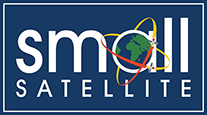Session
Session II: Next on the Pad-Enterprise
Location
Salt Palace Convention Center, Salt Lake City, UT
Abstract
The ORPHEUS mission is a collaborative research mission between the UK Defence Science Technology Laboratory (Dstl), the US Naval Research Laboratory (NRL), and the Canadian Defence Research and Development Canada (DRDC) to characterise the space domain and advance future concepts for defence.
The ORPHEUS mission comprises two CubeSats flying in a lead-trail configuration in a near-polar low earth orbit and aims to launch in 2027. This is a follow-on mission to the Coordinated Ionospheric Reconstruction Cubesat Experiment (CIRCE) and Prometheus-2 CubeSat missions that were lost due to a launch failure at the start of 2023, combining and updating the payload suites and objectives of these previous missions. The ORPHEUS mission will host a suite of cutting-edge CubeSat payloads, which will collectively and synergistically characterise the dynamic space environment, detect or identify objects of interest based on their spectral signatures and aim to improve space weather forecasting and now-casting models. Mirroring the payloads across both satellites enables a short temporal latency between observations.
The ORPHEUS mission payload suite includes the Triple Tiny Ionospheric Photometer (Tri-TIP), Winds Ions Neutral Composition Suite (WINCS), TOPside ionosphere Computer Assisted Tomography instrument (TOPCAT II), Radiation Monitor (RadMon 3.0), and Hyperspectral Imagers. Building on the science plans developed for the CIRCE mission and Prometheus-2, the ORPHEUS mission seeks to explore complementary science research between the dedicated Space Environment payloads and the Hyperspectral Imaging payloads. Additionally, evolutions to the design of the Tri-TIP mirror configuration and a potential to vary the spacecraft separation distance during the mission expands the potential scientific experimentation and measurements conducted throughout the mission lifetime.
This paper will cover an overview of the mission, development status, its research objectives and planned outcomes and an exploration of the innovative science achievable by individual payloads and through the combination of collected datasets.
Document Type
Event
ORPHEUS: A UK-Led Space Mission to Characterize the Space Domain and Advance Future Concepts for Defense
Salt Palace Convention Center, Salt Lake City, UT
The ORPHEUS mission is a collaborative research mission between the UK Defence Science Technology Laboratory (Dstl), the US Naval Research Laboratory (NRL), and the Canadian Defence Research and Development Canada (DRDC) to characterise the space domain and advance future concepts for defence.
The ORPHEUS mission comprises two CubeSats flying in a lead-trail configuration in a near-polar low earth orbit and aims to launch in 2027. This is a follow-on mission to the Coordinated Ionospheric Reconstruction Cubesat Experiment (CIRCE) and Prometheus-2 CubeSat missions that were lost due to a launch failure at the start of 2023, combining and updating the payload suites and objectives of these previous missions. The ORPHEUS mission will host a suite of cutting-edge CubeSat payloads, which will collectively and synergistically characterise the dynamic space environment, detect or identify objects of interest based on their spectral signatures and aim to improve space weather forecasting and now-casting models. Mirroring the payloads across both satellites enables a short temporal latency between observations.
The ORPHEUS mission payload suite includes the Triple Tiny Ionospheric Photometer (Tri-TIP), Winds Ions Neutral Composition Suite (WINCS), TOPside ionosphere Computer Assisted Tomography instrument (TOPCAT II), Radiation Monitor (RadMon 3.0), and Hyperspectral Imagers. Building on the science plans developed for the CIRCE mission and Prometheus-2, the ORPHEUS mission seeks to explore complementary science research between the dedicated Space Environment payloads and the Hyperspectral Imaging payloads. Additionally, evolutions to the design of the Tri-TIP mirror configuration and a potential to vary the spacecraft separation distance during the mission expands the potential scientific experimentation and measurements conducted throughout the mission lifetime.
This paper will cover an overview of the mission, development status, its research objectives and planned outcomes and an exploration of the innovative science achievable by individual payloads and through the combination of collected datasets.


